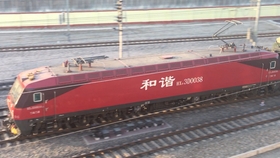The Role of PLC Logic Controllers in Modern Automation Systems
PLC logic controllers play a crucial role in modern automation systems, serving as the brains of these complex machines. They receive input signals from sensors and other devices, process these signals according to predefined logic rules, and generate output signals to control actuators and other components of the system. PLCs are able to monitor and control a wide range of processes, including temperature, pressure, flow rate, and many others, ensuring that these processes are optimized and controlled accurately. They also enable data collection and analysis, providing valuable feedback to help improve system performance and efficiency. In addition, PLCs are designed to be flexible and easy to program, allowing them to adapt to a variety of automation applications and requirements. They are a key component of modern automation systems, providing the intelligence and control necessary to ensure the smooth and efficient operation of these complex machines.
PLC, or Programmable Logic Controller, is a crucial component of modern automation systems. Its main function is to provide digital control over industrial processes, enabling machines to operate efficiently and precisely according to preset parameters. PLCs play a vital role in improving the reliability, efficiency, and productivity of industrial systems.
Firstly, PLCs are used to monitor and control industrial processes. They receive inputs from sensors and other devices, process these inputs according to predefined logic, and then provide outputs to actuators and other machines. This process of monitoring and control ensures that industrial processes are running smoothly and efficiently.
Secondly, PLCs also play a role in data acquisition and processing. Modern PLCs are equipped with powerful microprocessors and memory units that enable them to store, process, and analyze large amounts of data. This data acquisition and processing capability allows industrial systems to make better decisions based on real-time data, further improving efficiency and productivity.

Thirdly, PLCs are used to implement advanced control algorithms. These algorithms enable industrial systems to respond dynamically to changing conditions, such as temperature, pressure, and flow rates. By implementing these advanced control algorithms, PLCs help industrial systems to achieve optimal performance and efficiency.
Fourthly, PLCs also play a role in system integration and interoperability. Modern industrial systems often involve multiple devices and machines from different manufacturers. PLCs enable these devices and machines to communicate with each other seamlessly, ensuring that the entire system operates as a unified whole. This system integration and interoperability capability is crucial for the efficient and effective operation of modern industrial systems.
Finally, PLCs are also used to provide user interfaces and operator training. Many PLCs come with built-in screens or can be connected to external screens that display process variables, control parameters, and operator instructions. These user interfaces enable operators to monitor and control industrial processes remotely or on-site, providing flexibility and efficiency in operations. Additionally, PLCs can also be used to provide operator training, allowing personnel to learn how to use the PLC effectively and safely.

In conclusion, PLC logic controllers play a vital role in modern automation systems. They enable machines to operate efficiently and precisely according to preset parameters, improve the reliability, efficiency, and productivity of industrial systems. Furthermore, PLCs also play a role in data acquisition and processing, implementing advanced control algorithms, system integration and interoperability, and providing user interfaces and operator training. These multiple roles of PLCs in modern automation systems make them indispensable for the efficient and effective operation of industrial systems.
Articles related to the knowledge points of this article:
Relay and PLC Controllers: Understanding the Basics and Applications
Elevator PLC Controller: A Technical Review
PLC Controllers in Wuhan Tunnels